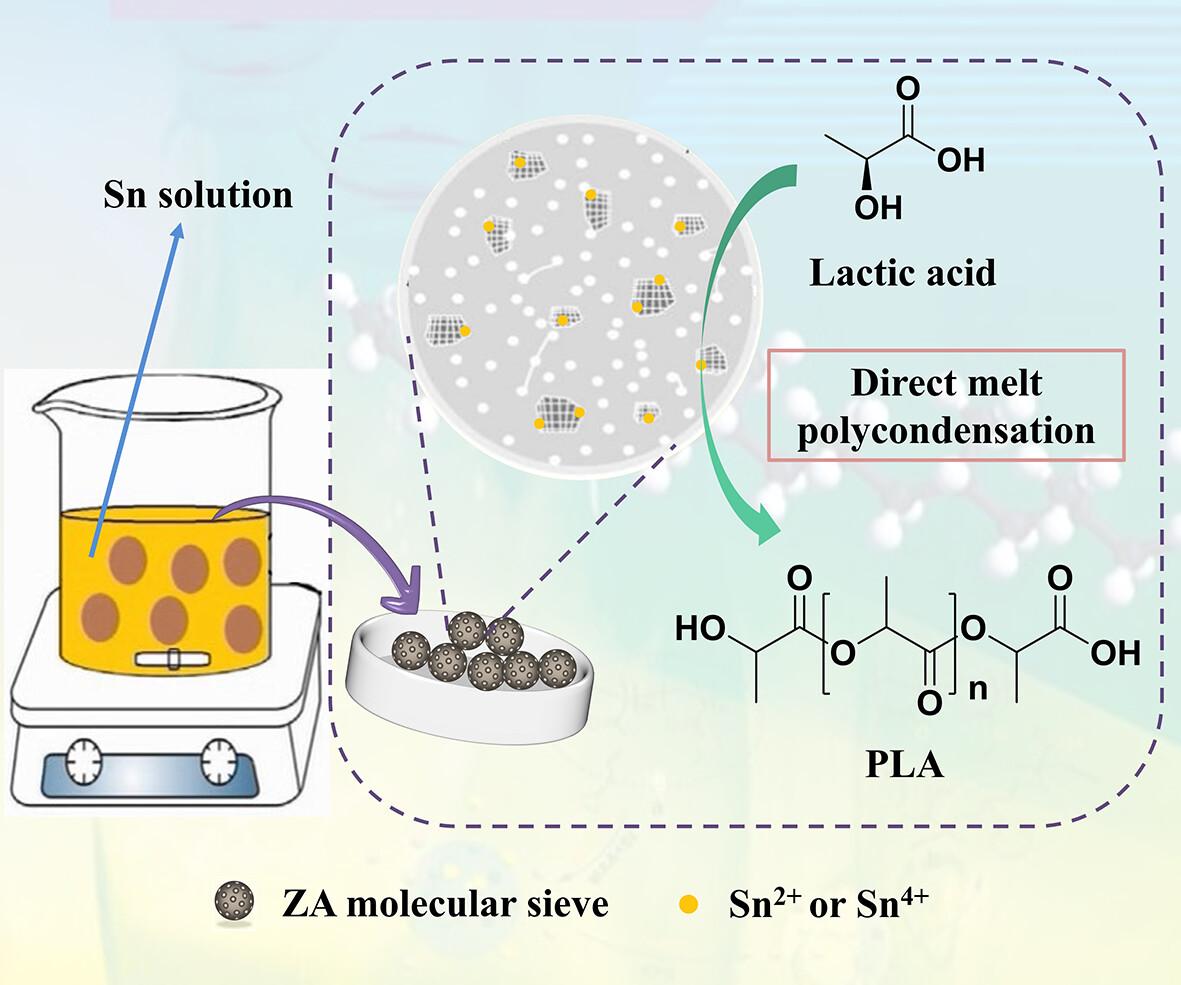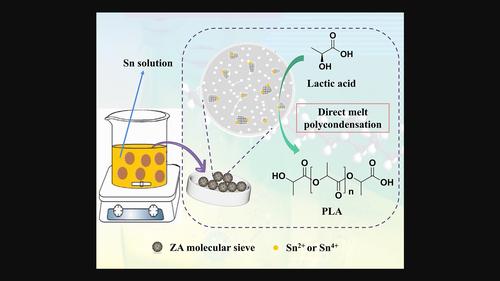求助PDF
{"title":"Poly(lactic acid) synthesized from non-food biomass feedstocks with tin-loaded ZA molecular sieve catalysts by direct melt polycondensation","authors":"Chengtao Gao, Yanwen Wang, Yunlong Yang, Shuhao Qin","doi":"10.1002/pi.6594","DOIUrl":null,"url":null,"abstract":"<p>The design and synthesis of catalysts loaded with active components has attracted considerable attention in current research owing to their exceptional catalytic performance. In this study, the focus was on the utilization of tin-loaded ZA molecular sieves, possessing remarkable adsorption properties, alongside the catalytic activity of tin. These catalysts were successfully prepared and employed for the synthesis of poly(lactic acid) (PLA) from lactic acid derived from non-food biomass. By modifying the treatment of ZA molecular sieves, the properties of tin-loaded ZA molecular sieves were adjusted. The resulting catalysts exhibited a high tin capacity ranging from 2.29% to 2.81% and featured abundant mesoporous structures, providing a surface area of up to 341.2 m<sup>2</sup> g<sup>−1</sup>. Regarding the preparation of PLA, our findings demonstrated that ZA-III-Sn<sup>2+</sup> as a catalyst yielded PLA with a higher weight-average molecular weight (<i>M</i><sub>w</sub>) up to 2.57 × 10<sup>4</sup> g mol<sup>−1</sup> and a higher yield of 65.3% compared to other catalysts. Moreover, the most optimal catalytic effect was achieved by adding the catalyst in three separate stages. Moreover, the amount of catalyst, reaction temperature and reaction time were found to influence both the molecular weight and yield of PLA. This study not only provides a valuable strategy for the preparation of loaded catalysts for PLA production but also offers new insights into the overall preparation process of PLA. © 2023 Society of Industrial Chemistry.</p>","PeriodicalId":20404,"journal":{"name":"Polymer International","volume":"73 4","pages":"310-318"},"PeriodicalIF":2.9000,"publicationDate":"2023-11-20","publicationTypes":"Journal Article","fieldsOfStudy":null,"isOpenAccess":false,"openAccessPdf":"","citationCount":"0","resultStr":null,"platform":"Semanticscholar","paperid":null,"PeriodicalName":"Polymer International","FirstCategoryId":"92","ListUrlMain":"https://onlinelibrary.wiley.com/doi/10.1002/pi.6594","RegionNum":4,"RegionCategory":"化学","ArticlePicture":[],"TitleCN":null,"AbstractTextCN":null,"PMCID":null,"EPubDate":"","PubModel":"","JCR":"Q2","JCRName":"POLYMER SCIENCE","Score":null,"Total":0}
引用次数: 0
引用
批量引用
Abstract
The design and synthesis of catalysts loaded with active components has attracted considerable attention in current research owing to their exceptional catalytic performance. In this study, the focus was on the utilization of tin-loaded ZA molecular sieves, possessing remarkable adsorption properties, alongside the catalytic activity of tin. These catalysts were successfully prepared and employed for the synthesis of poly(lactic acid) (PLA) from lactic acid derived from non-food biomass. By modifying the treatment of ZA molecular sieves, the properties of tin-loaded ZA molecular sieves were adjusted. The resulting catalysts exhibited a high tin capacity ranging from 2.29% to 2.81% and featured abundant mesoporous structures, providing a surface area of up to 341.2 m2 g−1 . Regarding the preparation of PLA, our findings demonstrated that ZA-III-Sn2+ as a catalyst yielded PLA with a higher weight-average molecular weight (M w ) up to 2.57 × 104 g mol−1 and a higher yield of 65.3% compared to other catalysts. Moreover, the most optimal catalytic effect was achieved by adding the catalyst in three separate stages. Moreover, the amount of catalyst, reaction temperature and reaction time were found to influence both the molecular weight and yield of PLA. This study not only provides a valuable strategy for the preparation of loaded catalysts for PLA production but also offers new insights into the overall preparation process of PLA. © 2023 Society of Industrial Chemistry.
以非食品类生物质为原料,用负载锡的ZA分子筛催化剂直接熔融缩聚合成聚乳酸
负载活性组分催化剂的设计与合成因其优异的催化性能而备受关注。本研究的重点是利用负载锡的ZA分子筛,该分子筛具有优异的吸附性能和锡的催化活性。成功制备了这些催化剂,并将其应用于非食品生物质乳酸合成聚乳酸(PLA)。通过对ZA分子筛处理方法的改进,调整了负载锡ZA分子筛的性能。所制得的催化剂具有2.29% ~ 2.81%的高锡容量,具有丰富的介孔结构,比表面积高达341.2 m2 g−1。在PLA的制备方面,我们的研究结果表明,与其他催化剂相比,ZA-III-Sn2+作为催化剂得到的PLA具有较高的重量-平均分子量(Mw),高达2.57 × 104 g mol−1,收率高达65.3%。并且,分三个阶段加入催化剂可以获得最佳的催化效果。此外,还发现催化剂用量、反应温度和反应时间对聚乳酸的分子量和收率都有影响。该研究不仅为PLA生产负载催化剂的制备提供了有价值的策略,而且为PLA的整体制备过程提供了新的见解。©2023工业化学学会。
本文章由计算机程序翻译,如有差异,请以英文原文为准。



 求助内容:
求助内容: 应助结果提醒方式:
应助结果提醒方式:


